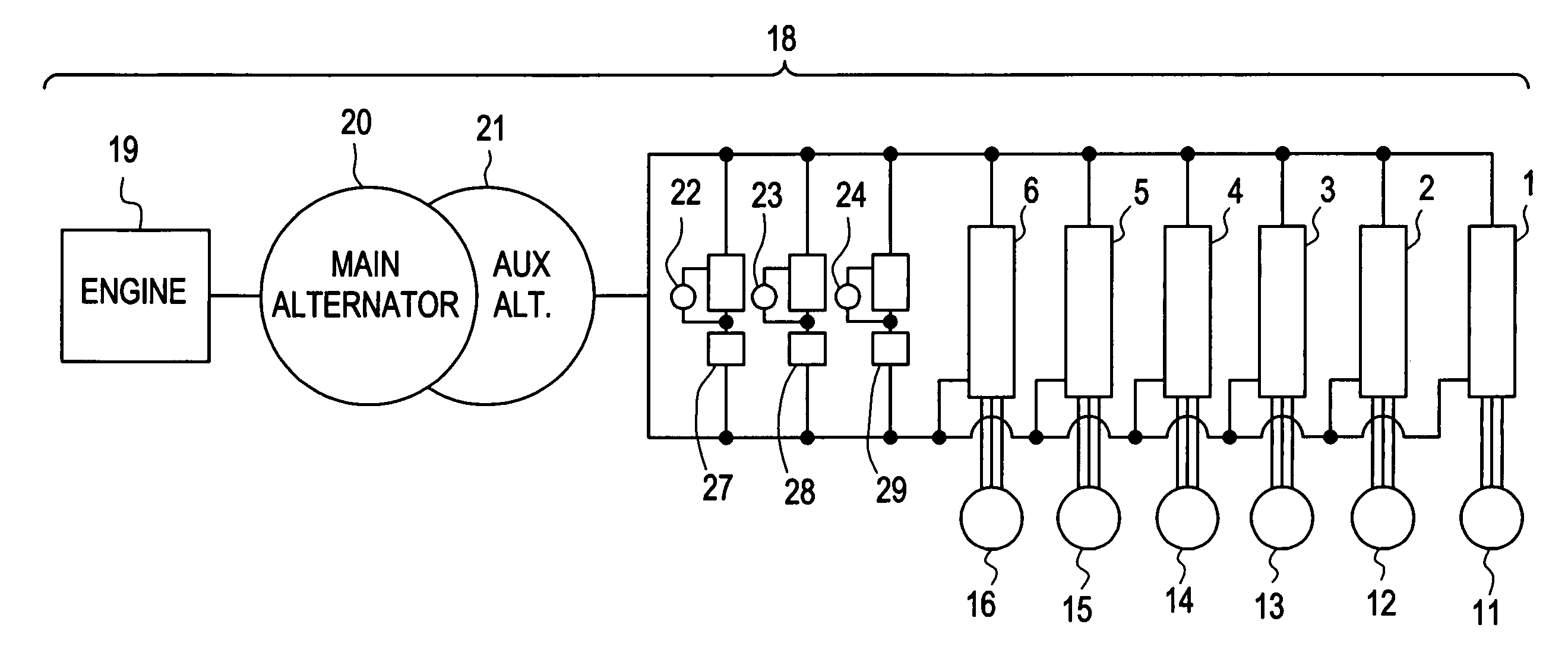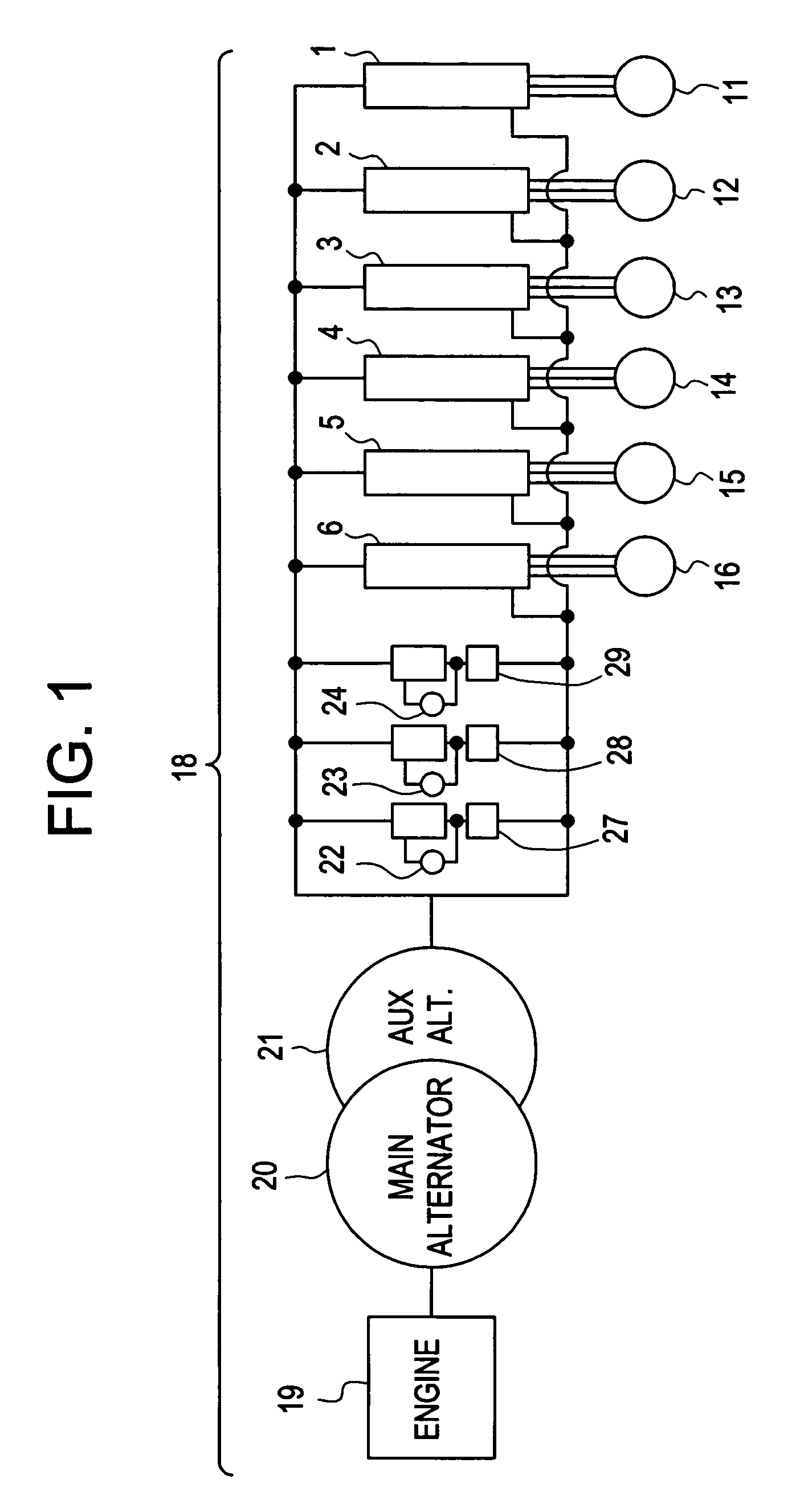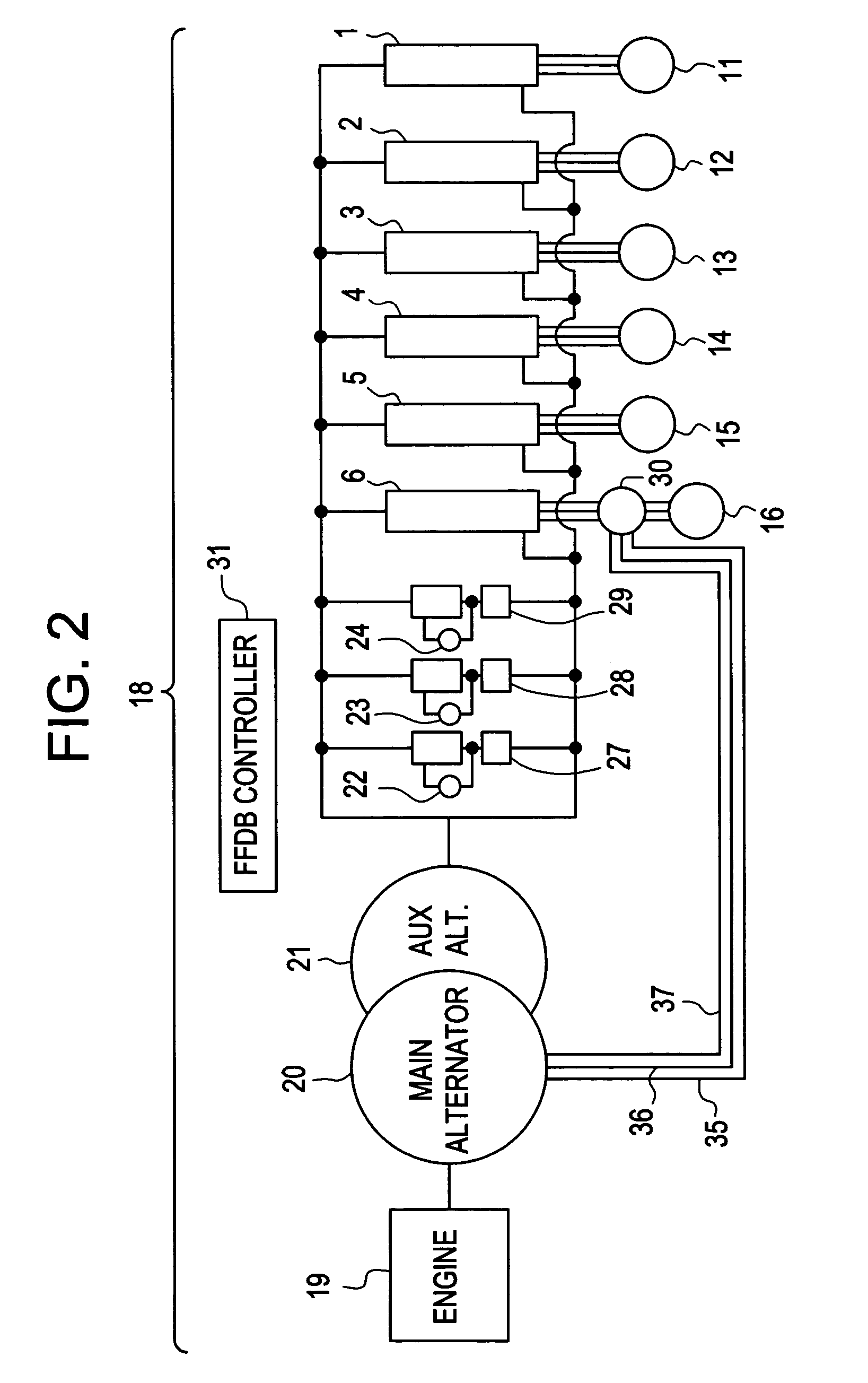Method for eliminating fuel use during dynamic braking
a dynamic braking and fuel use technology, applied in the direction of mechanical energy handling, motor/generator/converter stopper, dynamo-electric converter control, etc., can solve the problems of slowing down the vehicle, economic unattractive system, engine acting as an energy sink, etc., to reduce the amount of fuel supplied to the engine, reduce the amount of fuel, and increase the maximum braking effort of the vehicle
- Summary
- Abstract
- Description
- Claims
- Application Information
AI Technical Summary
Benefits of technology
Problems solved by technology
Method used
Image
Examples
Embodiment Construction
[0020]With reference to the figures, exemplary embodiments of the invention will now be described. Although this invention is disclosed specific to a dynamic braking system on a locomotive, this invention is applicable to other dynamic braking systems in general, for example those used on road or off-highway vehicles with AC traction motors and traction motor inverters. Additionally this invention is disclosed as being used with a vehicle having six traction motors. This invention is also applicable to vehicles having other than six traction motors.
[0021]FIG. 1 is an exemplary simplified block diagram of a locomotive and several components common in a prior art dynamic braking system, and FIG. 2 is an exemplary more detailed block diagram of a prior art AC locomotive power transmission and dynamic braking system. In FIG. 1, an AC locomotive 18 in motoring operation produces AC power where a main or traction motor alternator 20 is turned by a diesel engine 19. The traction motor alte...
PUM
 Login to View More
Login to View More Abstract
Description
Claims
Application Information
 Login to View More
Login to View More - R&D
- Intellectual Property
- Life Sciences
- Materials
- Tech Scout
- Unparalleled Data Quality
- Higher Quality Content
- 60% Fewer Hallucinations
Browse by: Latest US Patents, China's latest patents, Technical Efficacy Thesaurus, Application Domain, Technology Topic, Popular Technical Reports.
© 2025 PatSnap. All rights reserved.Legal|Privacy policy|Modern Slavery Act Transparency Statement|Sitemap|About US| Contact US: help@patsnap.com



